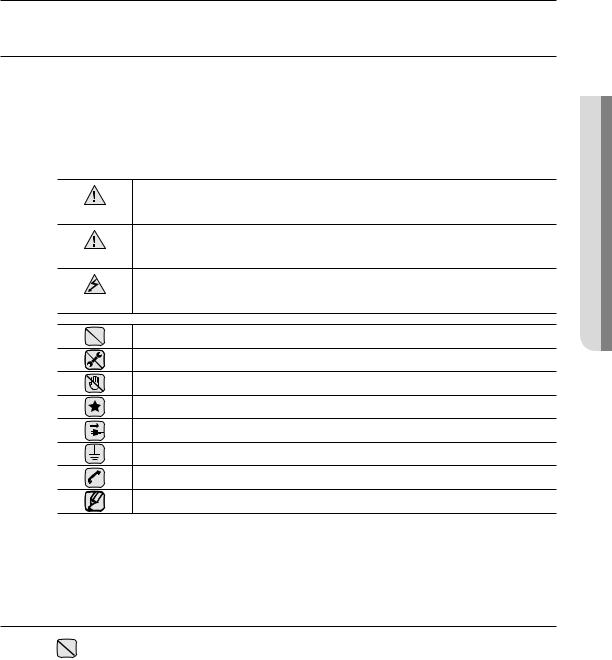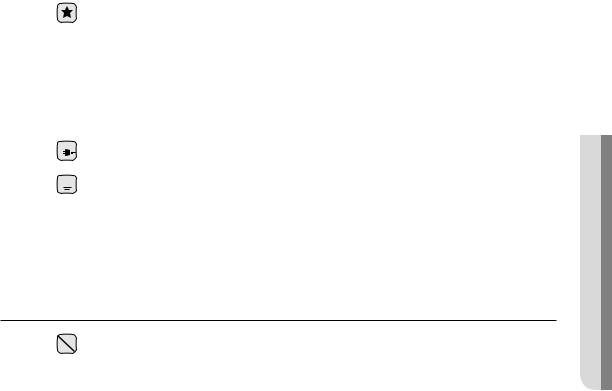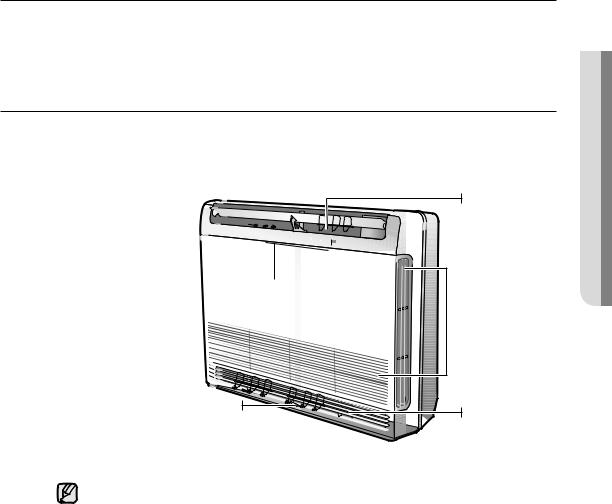SAMSUNG MH035FJEA, Console FJM, Console MH026FJEA User Manual

MHFJEA Series
Air Conditioner
user manual
imagine the possibilities
Thank you for purchasing this Samsung product. To receive more complete service, please register your product at
www.samsung.com/global/register

features of your new air conditioner
• Slim & Smart Design
Extremely slim and compact design will allow this air conditioner to fit in any kind of interior space.
• 






 function generates hydrogen(H) and oxygen(O2) to attack undesirable air contaminants such as bacteria, pollen, and odor. It makes you breathe better as if you were staying around waterfalls, ocean surf, rivers and mountains.
function generates hydrogen(H) and oxygen(O2) to attack undesirable air contaminants such as bacteria, pollen, and odor. It makes you breathe better as if you were staying around waterfalls, ocean surf, rivers and mountains.
• 2Way air outlet
There are two separate air outlets for cooling and heating. Having warmer air coming out from the bottom part of the air outlet will spread the warm air evenly throughout the room. Stay cooler and warmer in every corner of your room.
• Cost Efficient System
Your new air conditioner not only provides maximum cooling power in the summer, but can also be an efficient heating method in the winter with the advanced “Heat Pump” system. This technology is up to 300% more efficient than electrical heating, so you can further reduce its running cost. Now, meet year-round needs with one air conditioner.
For easy future reference write the model and serial number down. You will find your model number on the right side of the air conditioner.
Model #
Serial #
02_ features

safety information
To prevent electric shock, disconnect the power before servicing, cleaning, and installing the unit.
SAFETY INFORMATION
Before using your new air conditioner, please read this manual thoroughly to ensure that you know how to safely and efficiently operate the extensive features and functions of your new appliance.
Because the following operating instructions cover various models, the characteristics of your air conditioner may differ slightly from those described in this manual. If you have questions, call your nearest contact center or find help and information online at www.samsung.com.
What the icons and signs in this user manual mean:
Risk of death or serious personal injury.
WARNING
Potential risk of personal injury or material damage.
CAUTION |
|
|
To reduce the risk of fire, explosion, electric shock, or personal injury when |
CAUTION |
using your air conditioner, follow these basic safety instructions: |
|
Do NOT attempt.
Do NOT disassemble.
Do NOT touch.
Follow directions carefully.
Unplug the power plug from the wall socket.
Make sure the machine is grounded to prevent electric shock.
Call the contact center for help.
Recommended instructions or useful information for use.
These warning signs are here to prevent injury to you and others.
Please follow them carefully.
After reading this section, keep it in a safe place for future reference.
SEVERE WARNING SIGNS
Do not cut the power plug and connect to a different power cable.
Never attempt to lengthen the power cable.
• Potential risk of fire or electric shock.
Do not yank the power cable and touch the power plug with wet hands.
• Potential risk of fire or electric shock.
Never use a damaged power plug, power cable, or loosened power receptacle.
• Potential risk of fire or electric shock.
 ENGLISH
ENGLISH
safety information _03

safety information
SEVERE WARNING SIGNS
Do not place the air conditioner near hazardous substances or equipment that releases free flames to avoid fires, explosions or injuries.
• Potential risk of fire hazard or explosion.
Do not spray flammable gases such as insecticide near the air conditioner.
• Potential risk of electric shock, fire or unit malfunction.
Do not block or place items in front of the air conditioner. Do not step, hang onto, or place heavy items on the air conditioner.
• Potential risk of personal injury.
Do not insert anything such as fingers or branches into the air conditioner vents.
• Keep children away from the air conditioner. Potential risk of personal injury.
Do not install the air conditioner in areas exposed to the inflammable gas leakage or the potential risk of gas leakage.
• Potential risk of fire hazard or explosion.
Do not install the outdoor unit at an unstable place such as outer high wall of an apartment or building and on a outside of terrace to avoid falling.
• If the outdoor unit falls, it may cause personal injury or loss of property.
 Consult the place of purchase or a contact center to disassemble or reinstall the air conditioner.
Consult the place of purchase or a contact center to disassemble or reinstall the air conditioner.
• Potential risk of unit malfunction, water leakage, electric shock, or fire.
Do not connect the air conditioner with heating apparatus or do not attempt to disassemble, remodel or repair it by yourself.
•Potential risk of malfunction, electric shock or fire. If repairs are needed, consult the contact center.
Consult the place of purchase or a contact center to install the air conditioner.
•Improper installation carries a risk of unit malfunction, water leakage, electric shock or fire.
•If installing in specialty areas, such as a factory complex or saline coastal area, consult the place of purchase or contact center for specific installation details.
Install the air conditioner with the support bracket securely fastened to use for an extended period of time.
• If the air conditioner falls, it may cause personal injury or loss of property.
Ensure the air conditioner is installed in compliance with current national safety standards.
Use a rated circuit breaker only.
•Never use steel wires or copper wires as a circuit breaker. It may cause fire or unit malfunction.
Use an exclusive power source for the air conditioner.
• Potential risk of electric shock or fire.
Do not put undue stress on the power cable or place heavy objects on it. Do not bend the power cable excessively.
• Potential risk of fire or electric shock.
04_ safety information

If the air conditioner becomes wet, turn the power off immediately and call your nearest contact center.
• Potential risk of fire or electric shock.
Install an exclusive circuit breaker and short-circuit breaker for the air conditioner.
• Potential risk of electric shock or fire.
If the power cable or cord is damaged, the manufacturer, a qualified service technician must replace it to avoid a potential risk.
 Disconnect the air conditioner from power supply before it is repaired or disassembled.
Disconnect the air conditioner from power supply before it is repaired or disassembled.
 Use a receptacle that has a ground terminal. The receptacle must be used exclusively for the air conditioner.
Use a receptacle that has a ground terminal. The receptacle must be used exclusively for the air conditioner.
• Improper electrical grounding may cause electric shock or fire.
Ensure proper ground has been established when installing the air conditioner. Do not connect the ground cable of the unit to a gas pipe, a water pipe or a telephone line.
• Potential risk of electric shock.
CAUTION SIGNS
Ensure no water gets into the air conditioner.
• Potential risk of fire or electric shock.
Do not install the air conditioner close to heating appliances to avoid damage.
Turn off the air conditioner using the provided remote control or control accessory (if provided). Do not unplug to turn off the unit (unless there is an immediate danger).
Do not open the front grille during operation.
• Potential risk of electric shock or unit malfunction.
Cool air should not flow directly towards people, pets, and plants.
• It is harmful to your health, pets, and plants.
Do not run the air conditioner for an extended period of time in a room with the door closed or with babies, elderly or disabled people.
•Open the door or windows to ventilate your room at least once an hour to prevent oxygen shortage.
Do not use the air conditioner as a cooling precision instrument for food, pets, plants, cosmetics or machinery.
• Potential risk of property loss.
Do not drink water from the air conditioner.
• Potential risk of health hazard.
Do not give excessive shock to the air conditioner.
• Potential risk of fire or unit malfunction.
Do not expose the dust filter to direct sunlight while drying.
• Strong direct sunlight may deform the dust filter.
Do not spray water directly on the air conditioner or use benzene, thinner or alcohol to clean the surface of the unit.
•Potential risk of electric shock or fire.
•Potential risk of damage to the air conditioner.
 ENGLISH
ENGLISH
safety information _05

safety information
CAUTION SIGNS
Do not place containers with liquid or other objects on the unit. Do not pull the indoor unit.
• If the indoor unit falls, it may cause personal injury.
Do not allow children to climb on the air conditioner. Do not touch the pipe connected to the air conditioner.
• Potential risk of personal injury or burn.
The air conditioner is composed of moving parts. Keep children away from the unit to avoid physical injury.
Check for damage on delivery. If damaged, do not install the air conditioner and call the place of purchase immediately.
Make sure the voltage and frequency of the electric system are compatible with the air conditioner.
Insert the dust filter before operating the air conditioner.
•If there is no dust filter inside the air conditioner, accumulated dust may shorten the life of the air conditioner and cause electricity waste.
Keep indoor temperatures stable and not extremely cold, especially where there are children, elderly or disabled people.
Clean the conditioner after the inner fan stops operating.
• Potential risk of injury or electric shock.
Clean the dust filter every 2 weeks. Clean the filter more frequently if the air conditioner is operated in dusty areas.
Inspect the condition, electric connections, pipes and external case of the air conditioner regularly by a qualified service technician.
Do not open doors and windows in the room being cooled during operation unless necessary.
Do not block air conditioner vents. If objects block the air flow, it may cause unit malfunction or poor performance.
The packaging material and used batteries of the remote control(optional) must be disposed of in accordance with the national standards.
The refrigerant used in the air conditioner must be treated as chemical waste. Dispose the refrigerant following national standards.
Have a qualified service technician install the air conditioner and perform a trial operation.
Install the air conditioner away from direct exposure to sunlight, heating apparatus, and humid places.
• Hang a curtain to boost cooling efficiency and to avoid the risk of electric shock.
Firmly connect the drain hose to the air conditioner for a proper water drainage.
•If it is not drain well, the condensed-water from the indoor unit may overflow and leak into the room.
Install the outdoor unit where operating noise and vibration will not disturb your neighbor and be well-ventilated with no obstacle.
•Potential risk of malfunction.
•Operating noise may disturb your neighbor.
06_ safety information

Install a pipe length according to minimum and maximum limit prescribed into installation manual.
•with length different from specified, the system performance and reliability will be reduced drastically.
If a power outage occurs while the air conditioner is working, turn off the power source immediately.
When cleaning the outdoor unit, touch the heat exchanger radiator fins with extreme care.
• Wearing thick gloves can protect your hands.
Make sure there are no obstacles under the indoor unit.
• Potential risk of fire or loss of property.
Make sure that children take precautions against access to the air conditioner and they do not play with the unit.
The maximum input power & current and the input power & current are measured in accordance with the rules given in the IEC/ISO.
Ensure to use the wireless remote control up to a distance of about 7m from the remote control sensor of the air conditioner.
• The air conditioner may not work over the distance of 7m.
Make sure the cover or any obstacle is not near the air conditioner. Allow sufficient space for air circulation.
• Insufficient ventilation may result in poor performance.
Batteries should be removed from the wireless remote control and be kept separate when unused for long period of time.
If failure or damage occurs on the conditions of improper use not followed by the installation manual, there will be an extra labor charge for installing and construction.
•Potential risk of malfunction, electric shock or fire if repairs or installations are attempted by a non-qualified service technician.
Ensure the off-on and protection switches are properly installed.
Do not use the air conditioner if damaged. If problems occur, immediately stop operation and disconnect the plug from the power supply.
If the air conditioner will not be used for an extended period of time (for example, over several months), unplug the power from the wall.
Call the place of purchase or a contact center if repairs are needed
•Potential risk of fire or electric shock if disassembly or repairs are attempted by a non-qualified service technician.
If you smell burning plastic, hear strange sounds, or see smoke coming from the unit, unplug the air conditioner immediately and call a contact center.
• Potential risk of fire or electric shock.
 ENGLISH
ENGLISH
safety information _07

contents
VIEWING YOUR AIR CONDITIONER
BEFORE USE
09
09Checking the indoor unit
09Main parts
10Mode indicator and control button
11Removing the front panel
11Viewing the power button and parts under the panel
11Checking the outdoor unit
12Checking the remote control
13Remote control display
13 Using the remote control
13 Installing the batteries
OPERATING BASIC FUNCTION |
14 |
Turning the air conditioner on and off |
|
14 |
14 |
Selecting operation mode |
|
1514 |
CoolAuto |
|
|
|
16 |
Dry |
|
|
17 |
Fan |
|
|
18 |
Heat |
|
|
19 |
Adjusting the air flow direction |
|
|
19 |
Vertical air flow |
|
|
19 |
Horizontal air flow |
|
OPERATING ADVANCED FUNCTION |
20 |
Setting the Timer |
|
20 |
20 |
On Timer |
|
2221 |
CombiningOff Timer |
ON and Off timer |
|
|
23 |
Using the |
function |
CLEANING AND MAINTAINING THE AIR |
24 |
Cleaning the exterior |
|
CONDITIONER |
24 |
Cleaning the filter |
|
25 |
24 |
Air filter |
|
25 |
Anti-allergy filter |
||
26 |
Replacing the filter |
||
|
26 |
Deodorizing filter |
|
|
26 |
Maintaining your air conditioner |
|
APPENDIX |
27 |
Troubleshooting |
|
28 |
28 |
Operation ranges |
|
08_ contents

viewing your air conditioner before use
Congratulations on the purchase of the air conditioner. We hope you will enjoy the features of your air conditioner and stay cool or warm with optimal efficiency.
Please read the user manual to get started and to make the best use of the air conditioner.
CHECKING THE INDOOR UNIT
Carefully unpack your air conditioner, and check the unit to make sure it is not damaged.
Main parts
Blade pin lever
Air outlet 
 (Cooling/Heating)
(Cooling/Heating) 
Mode indicator and  Control button
Control button
 Air intake
Air intake
Blade pin lever |
Air outlet |
|
|
|
(Heating) |
Your air conditioner may slightly look different from illustration shown above depending on your model.
 ENGLISH
ENGLISH
viewing _09
